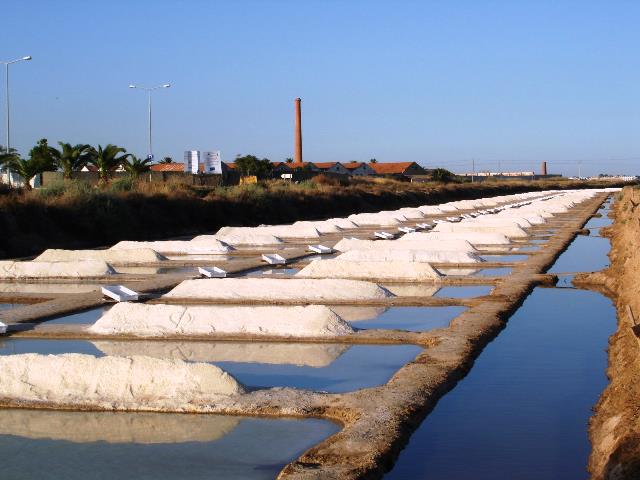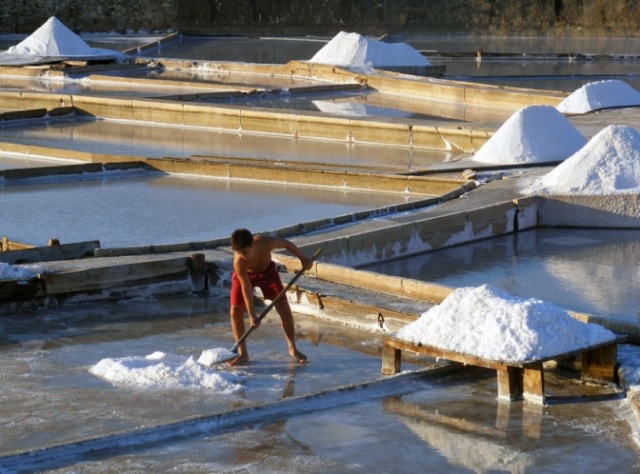Saliculture
Portugal has, in the continental part of the territory, five Salgados (salt flats): Aveiro, Figueira da Foz, Tejo, Sado and Algarve
Saliculture
Breadcrumbs
- Fisheries
- Aquaculture and Saliculture
- Saliculture

The product obtained is a mixture of various salts precipitated from sea water, in which sodium chloride predominates. It is an essential raw material for many purposes, being part of the group of big-five raw-materials, however, due to its specific characteristics, most of the national production of sea salt in Portugal is destined for food purposes. The techniques used to take advantage of natural resources in some coastal areas of Portugal are based on the use of renewable energy (solar and wind energy).
The technological processes employed range from the use of traditional methodologies (artisanal production), to the use of heavy and automated machinery, reflected in the dimension of the production units. These units, called salt pans or marine, are made up of a set of reservoirs built on land and on impermeable soils, implanted in marshland areas. Feeding seawater to the first evaporation reservoirs takes advantage, as a general rule, of the tides.
The flow of water to increase the graduation / concentration of salt, due to evaporation by the heat of the sun and the wind, continues along the next reservoirs until the crystallises, where the sea salt is deposited. The movement of water uses the gravitational potential of the first reservoirs, whose topographic shares are higher than the others, gained by taking water from the highest tides or by pumping. 
Portugal has, in the continental part of the territory, five Salgados (salt flats): Aveiro, Figueira da Foz, Tejo, Sado and Algarve.
The most traditional technique, which comes from time immemorial, as the Romans already used it, is the one that is still in use in Salgado de Aveiro, also known as the "Aveirense technique" applied in small units, associating frequent "redures" ( salt collections) and an intensive and knowledgeable labor force.
Mechanized techniques, some very sophisticated and making use of heavy machinery, are adopted in larger units and in which the number of collections per harvest (annual production cycle) is small.
Globally, the productive activity of sea salt is very beneficial for the maintenance of environmental balance in coastal areas, with the specific avifauna and the stability of the coastline being the most benefited aspects, since the active salt pans provide the existence of determining ecosystems for the survival of various animal and plant species and prevent the negative action of high tides on coastal areas due to the dike walls that defend the productive units.
This artisan and traditional methodology, part of the Culture and the History of Portugal itself, has several variants in the other salty foods, resulting from the climatic and soil characteristics and the idiosyncrasies of the marnots in each region.



